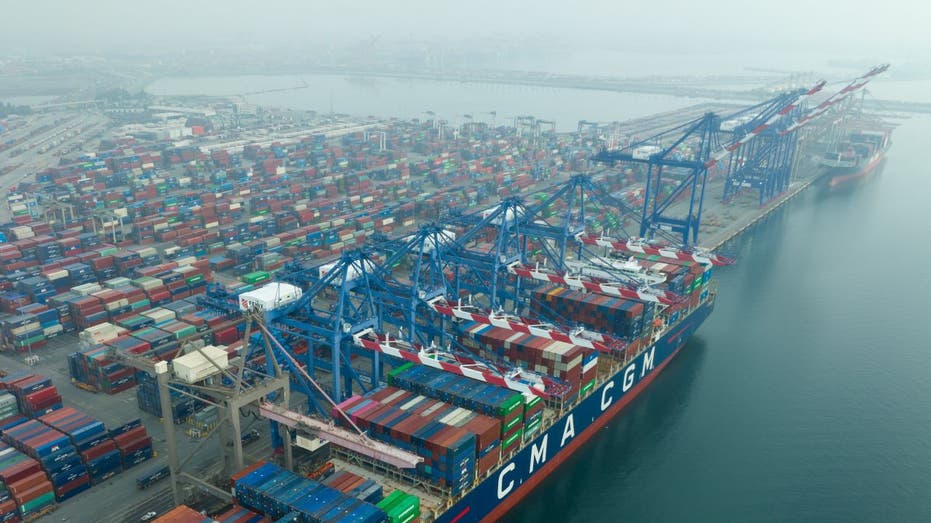The Big Money Show panel discusses President Donald Trumps tariff-divided plan for lower and middle-income Americans.
President Donald Trump’s proposal to give Americans $2,000 tariff dividends could carry a hefty price tag, according to a new analysis by a budget watchdog.
Trump told reporters in the Oval Office on Monday that the federal government is looking to pay out the dividends by mid-2026, which would fall ahead of the midterm elections. The timing could depend on Congress, as Treasury Secretary Scott Bessent recently said legislation would be needed to authorize the dividends.
“We’re going to be issuing dividends later on, somewhere prior to, you know, probably the middle of next year, a little bit later than that,” Trump said. “Thousands of dollars for individuals of moderate income, middle income.”
Trump’s proposed $2,000 tariff dividends for most Americans would cost an estimated $600 billion per year, the CRFB analysis found. (Anna Moneymaker/Getty Images)
The president announced the proposal in a post last week on his Truth Social platform, saying that “We are taking in Trillions of Dollars and will soon begin paying down our ENORMOUS DEBT, $37 Trillion. Record Investment in the USA, plants and factories going up all over the place. A dividend of at least $2000 a person (not including high income people!) will be paid to everyone.”
The nonpartisan Committee for a Responsible Federal Budget (CRFB) estimated that if Trump’s tariff dividends are structured like the COVID-19 era stimulus payments that went to adults and children after accounting for income levels, each round of tariff payments would cost about $600 billion on an annual basis.
PREDICTION MARKETS PUT TRUMP TARIFF WIN AT 24% FOLLOWING SUPREME COURT ORAL ARGUMENTS
The CRFB noted that the tariffs the Trump administration has put in place have raised about $100 billion so far this year, including tariffs that were ruled illegal by federal courts and are pending an appeal before the Supreme Court.
On an annual basis, the Trump administration’s tariffs – including those that may be struck down by the Supreme Court – are projected to raise about $300 billion per year. By contrast, the net new tariff revenue that isn’t subject to the Supreme Court ruling raises a little less than $100 billion per year.
TRUMP CALLS TARIFF OPPONENTS ‘FOOLS,’ PROMISES $2K DIVIDEND PAYMENTS FOR AMERICANS

Tariffs are taxes on imported goods that are paid by importers, who typically pass on some of those higher costs on to consumers through higher prices. (Qian Weizhong/VCG via Getty Images / Getty Images)
It’s unclear whether the president intends for tariff dividends to be paid annually or at less frequent intervals, or the amount of the dividend given that he stipulated “at least $2000 a person” in his social media post.
The CRFB said that if $2,000 dividends were paid annually, they would increase deficits by $6 trillion over 10 years, adding that the cost is “roughly twice as much as President Trump’s are estimated to raise over the same time period.”
If the administration were to pay the tariff dividends on a revenue-neutral basis, if current tariffs remain in effect, those $2,000 dividends could be paid every other year starting in 2027, according to the analysis.
TRUMP SAYS TARIFF REVENUE TO FUND $2K CHECKS FOR AMERICANS, LOWER NATION’S $38T DEBT
However, if lower court rulings are upheld by the Supreme Court and much of the Trump administration’s tariffs are ruled illegal, the remaining tariff income would be sufficient to pay $2,000 dividends after seven years.
“Using income from tariffs to pay dividends would mean that income could not be used to reduce deficits or offset borrowing from the One Big Beautiful Bill Act,” CRFB wrote.
GET FOX BUSINESS ON THE GO BY CLICKING HERE
The analysis also found that using tariff revenue for rebates or dividends, rather than to pay down the national debt, would push the debt as a share of gross domestic product (GDP) to 127% by 2035, higher than the 120% projected under current law. If $2,000 dividends are paid annually, that would push debt to 134% of GDP.